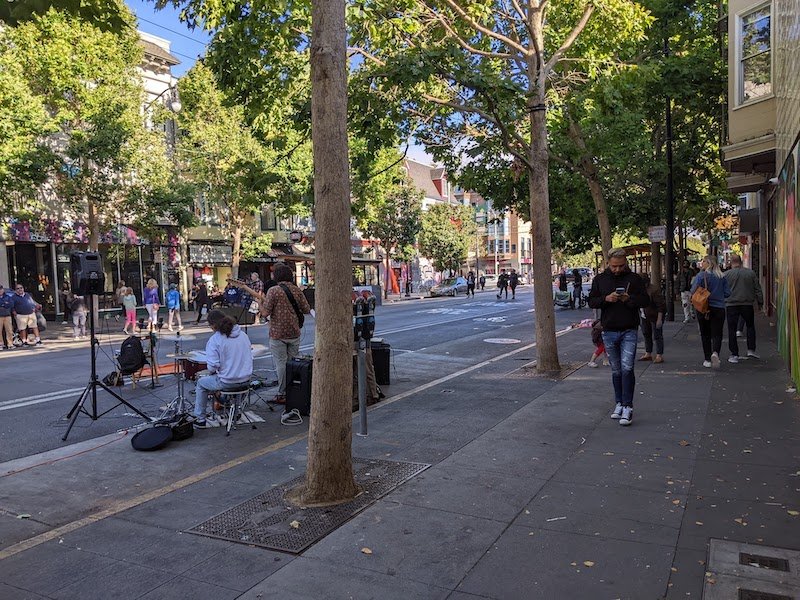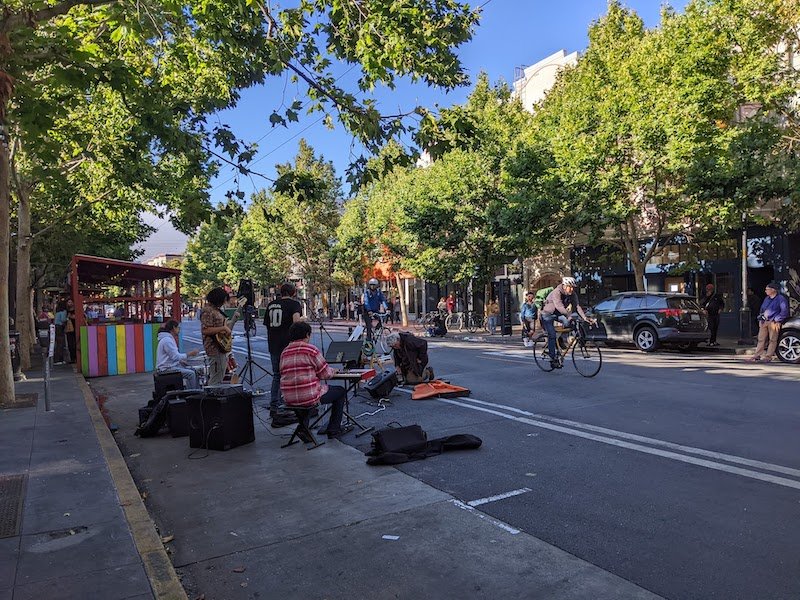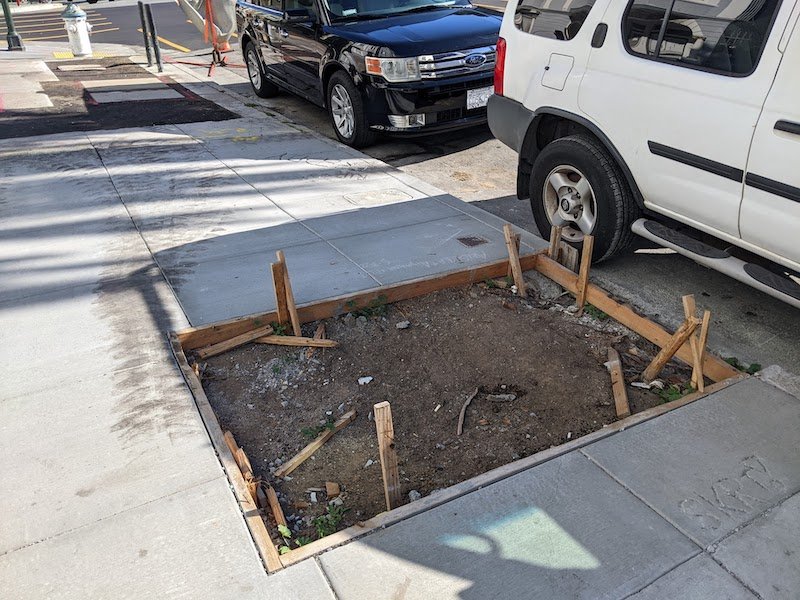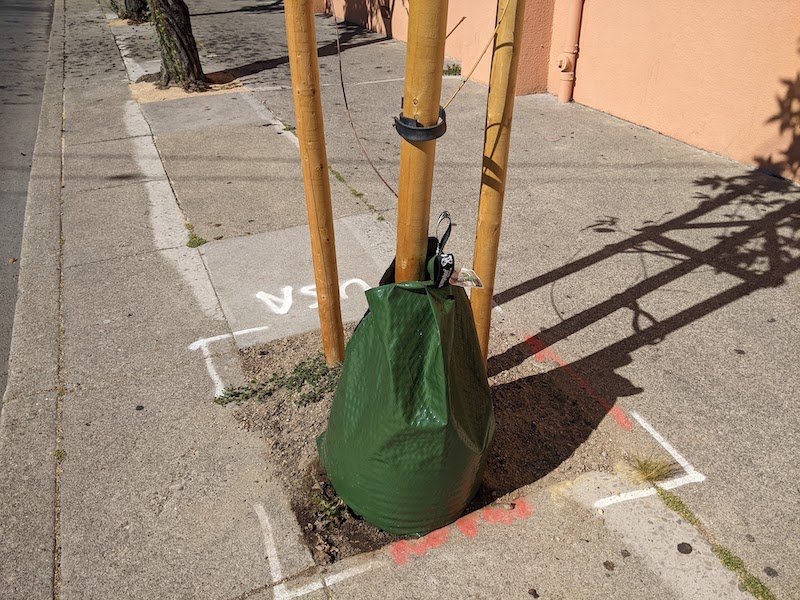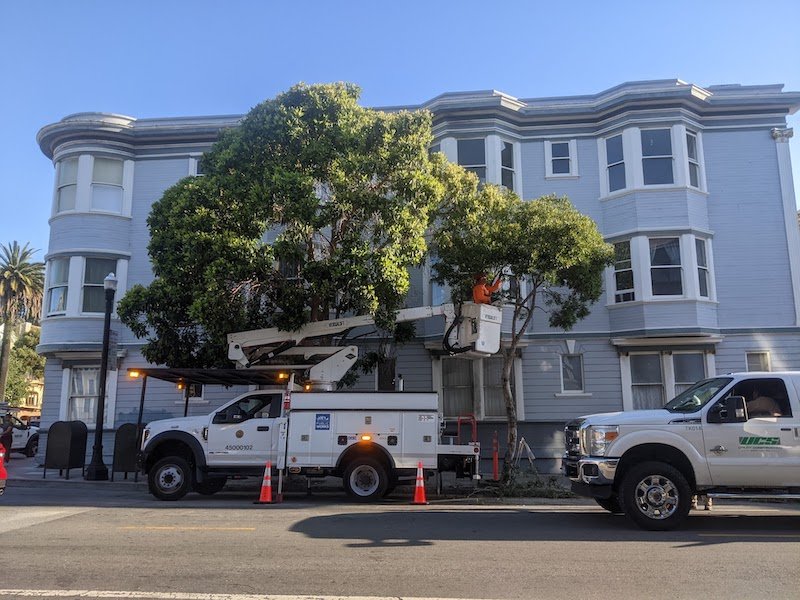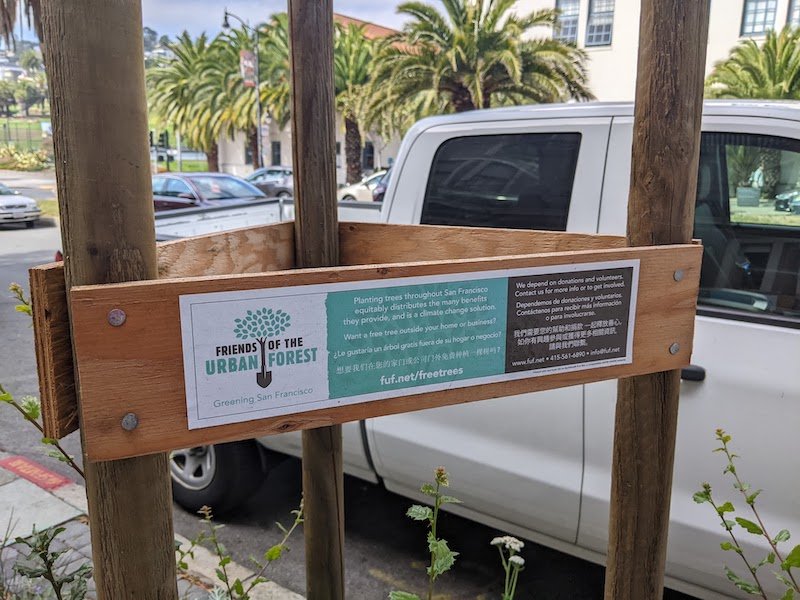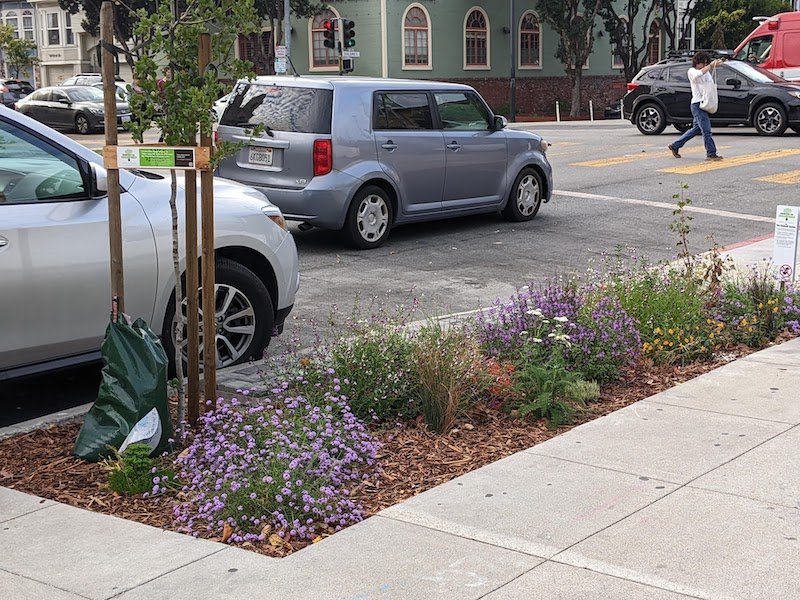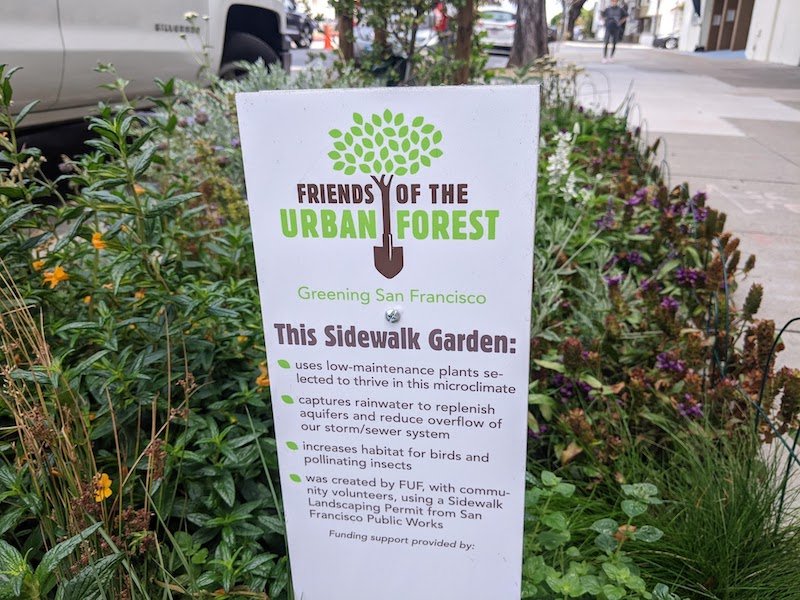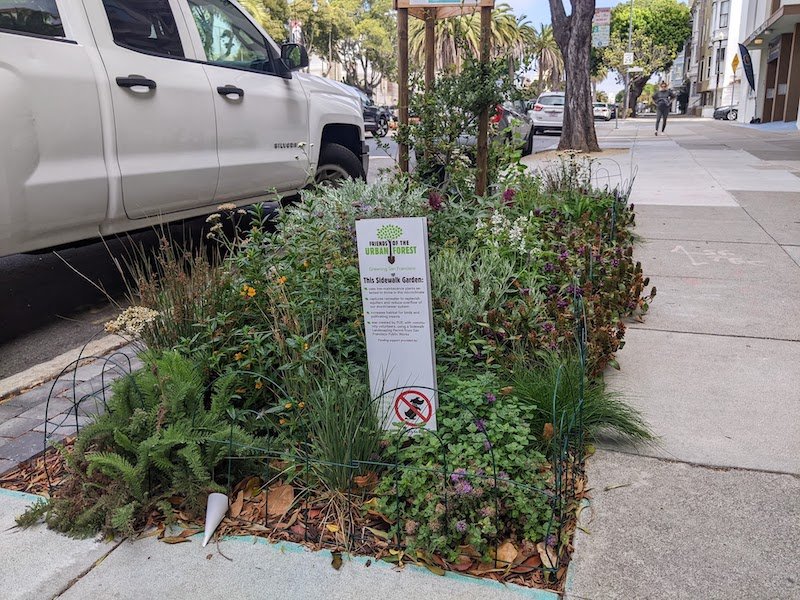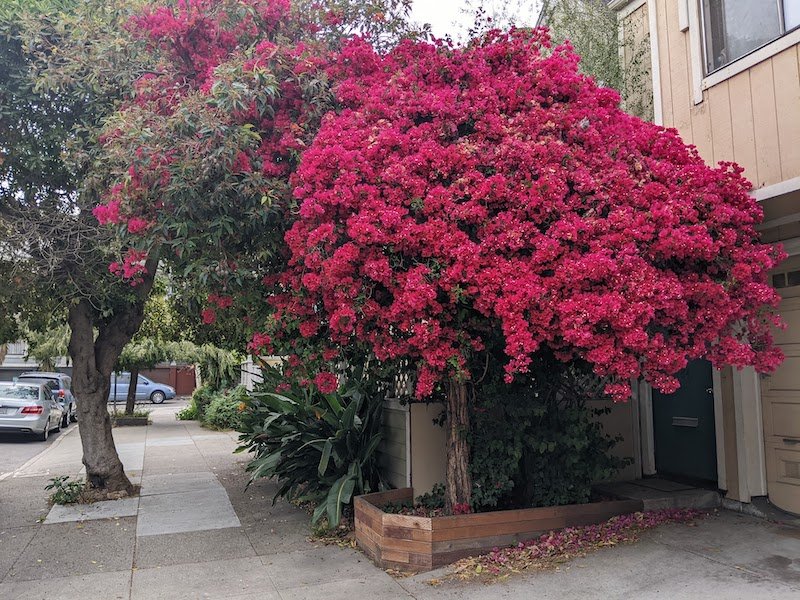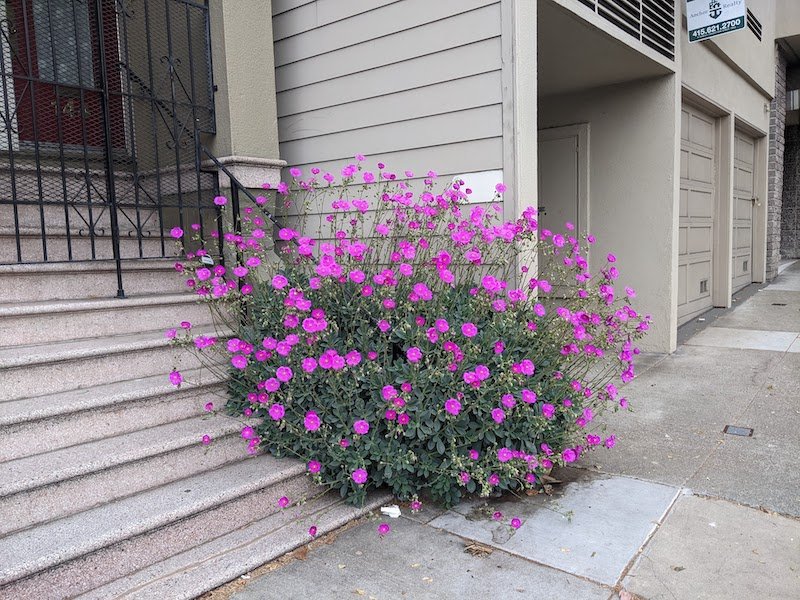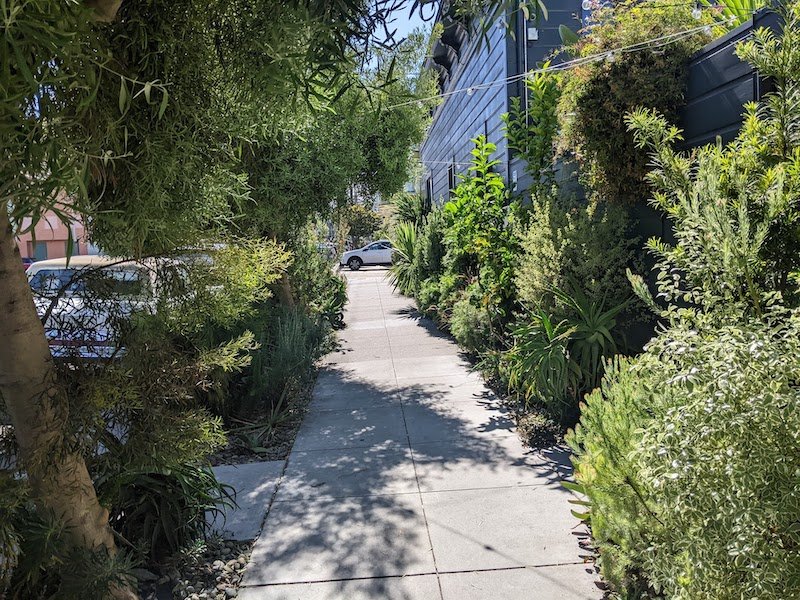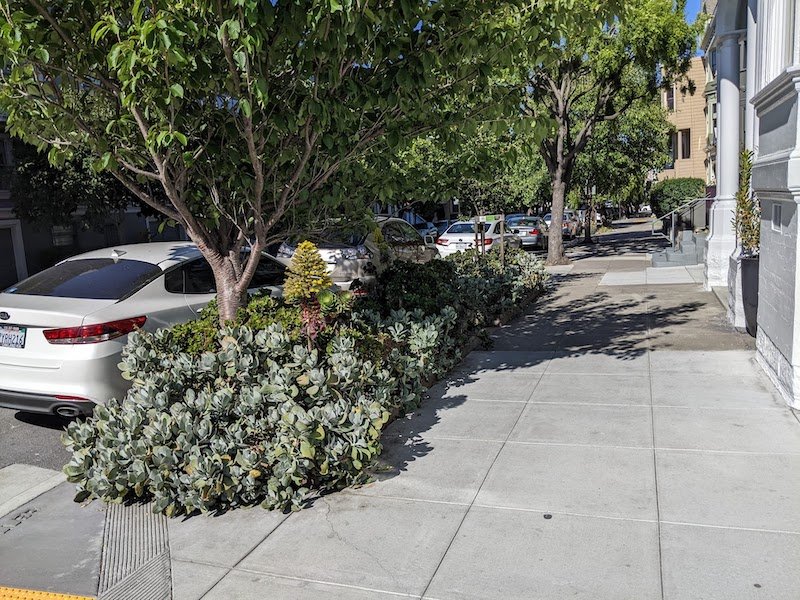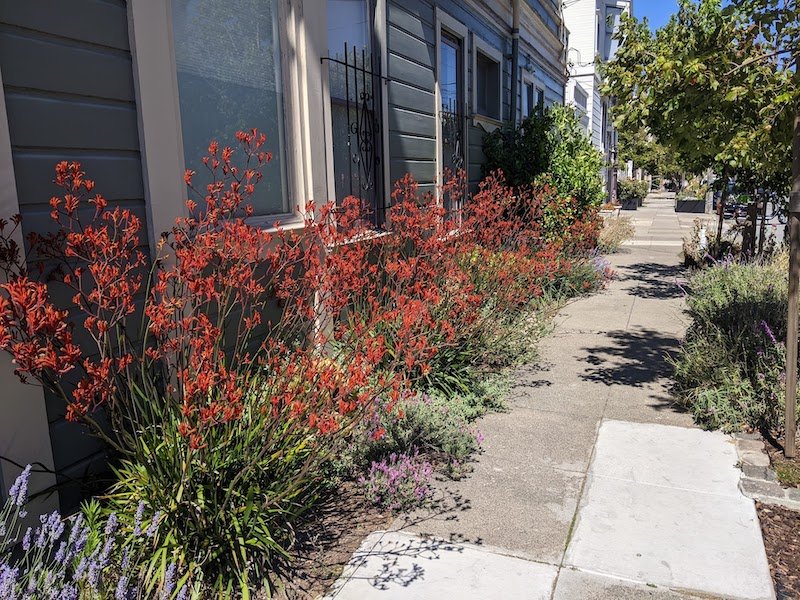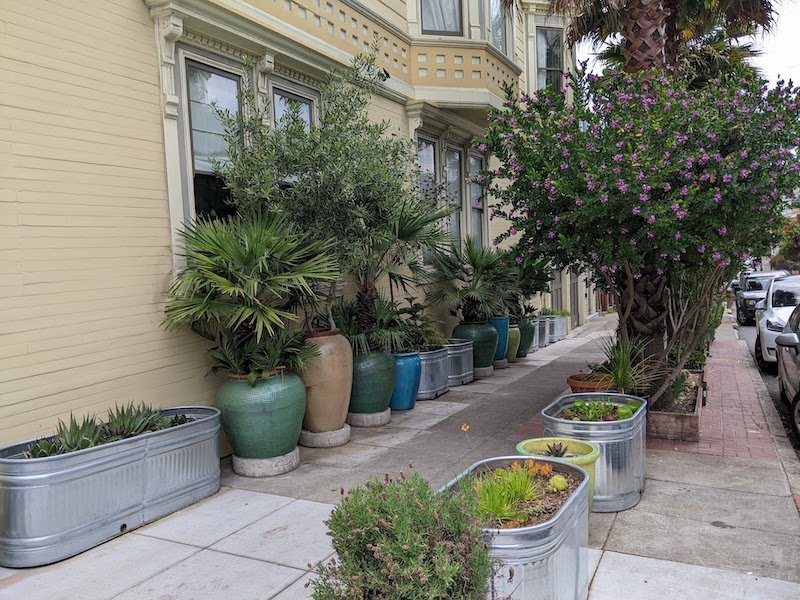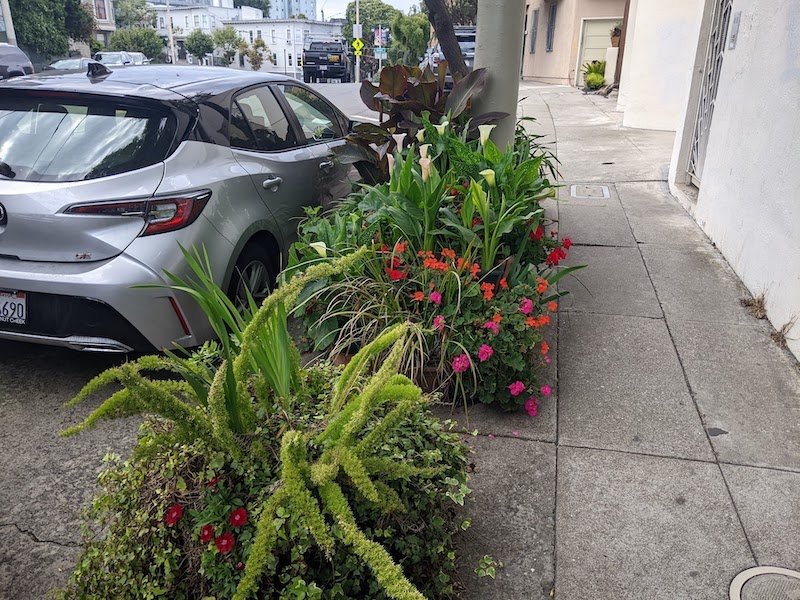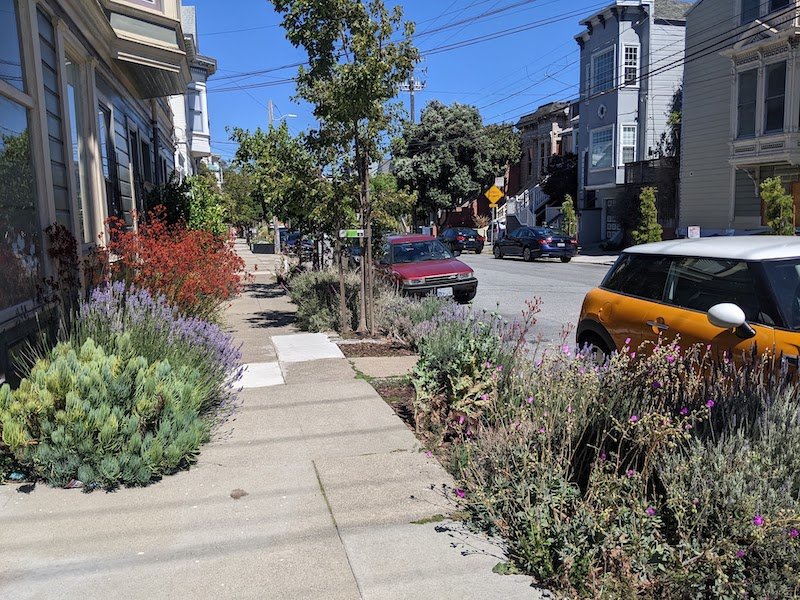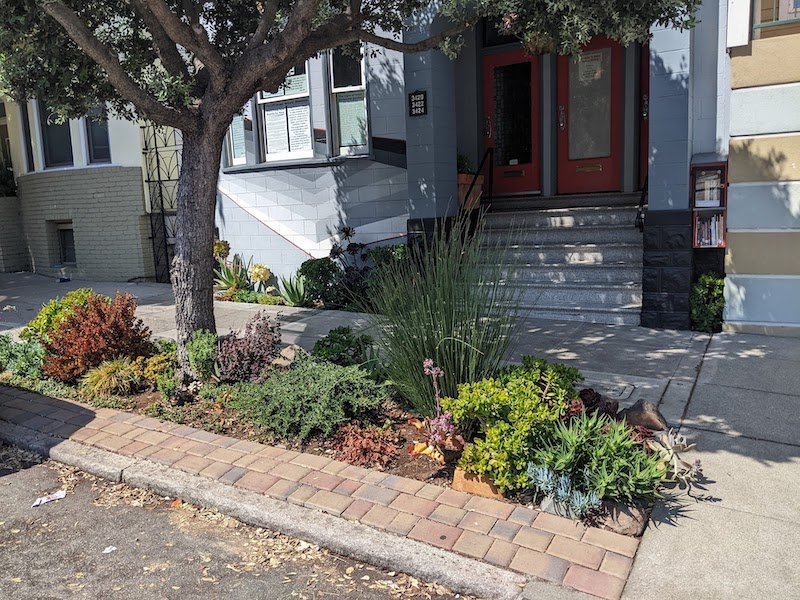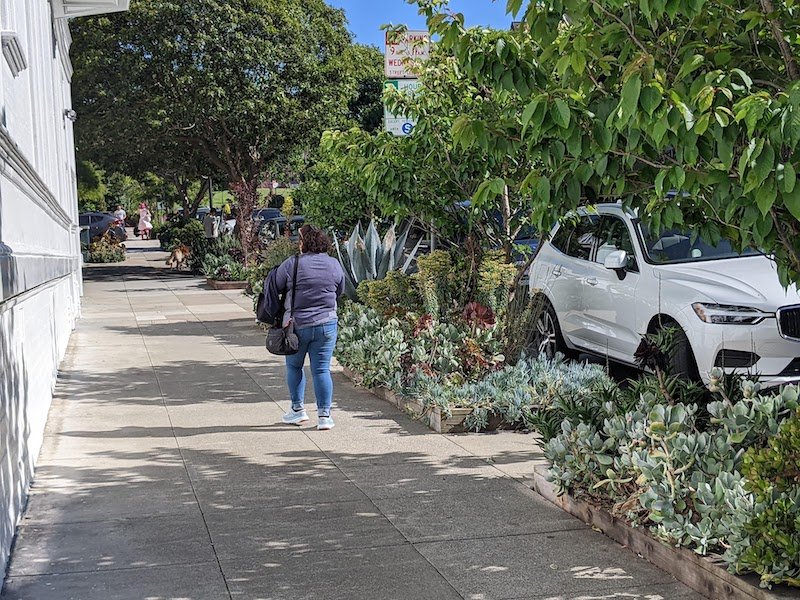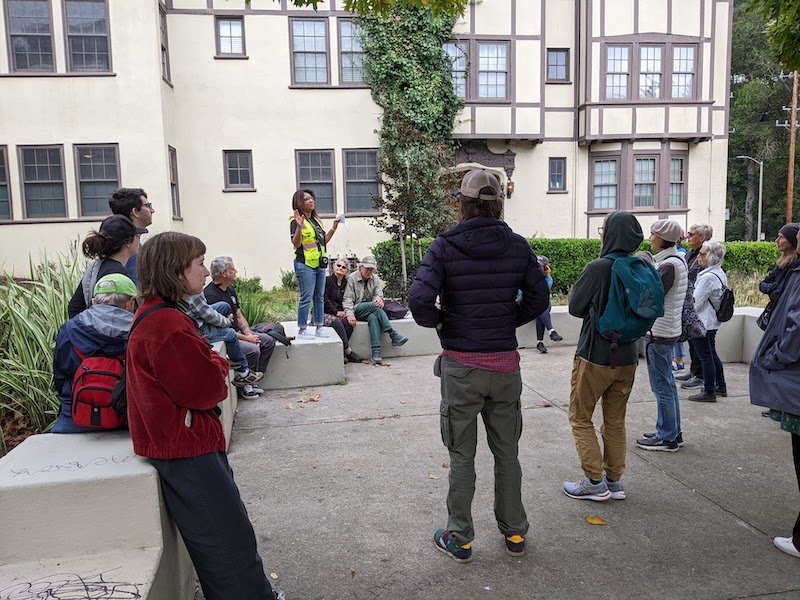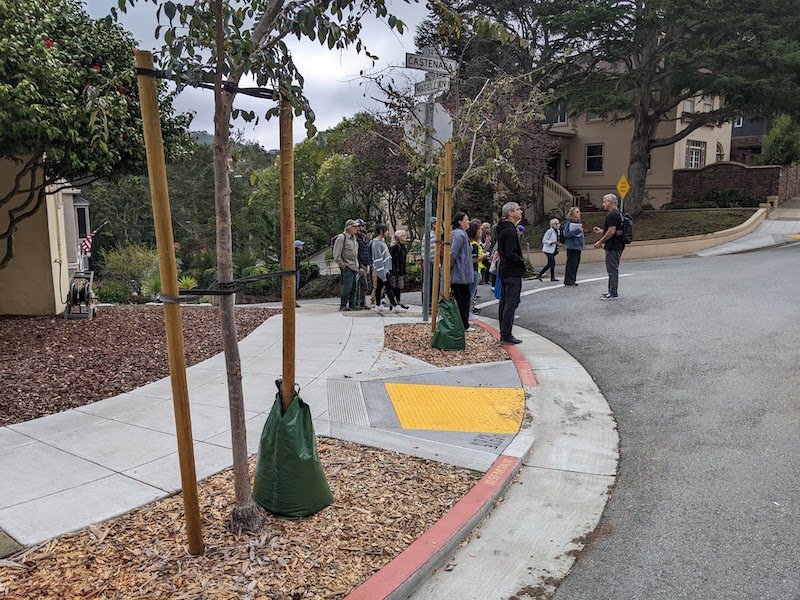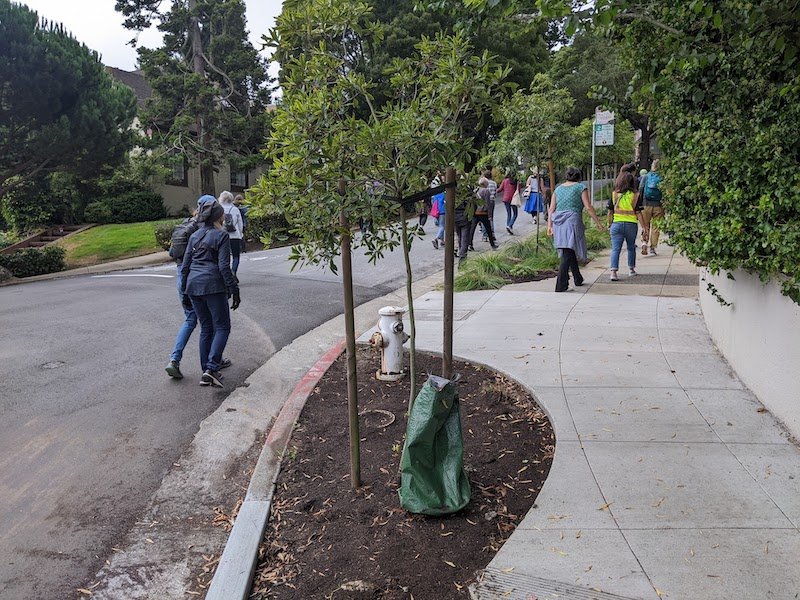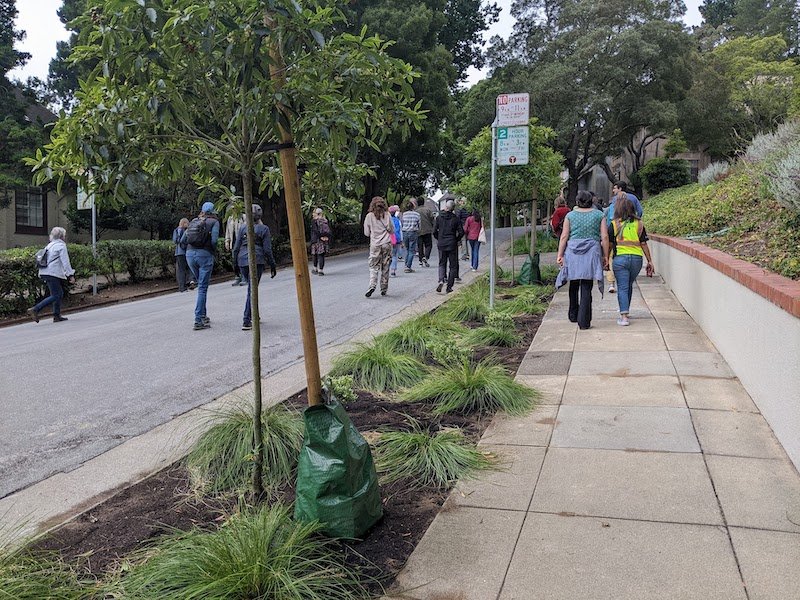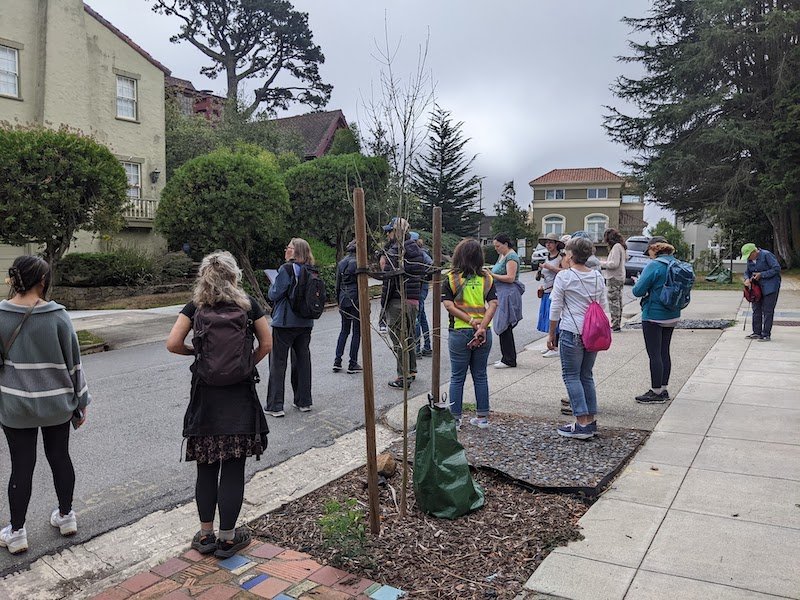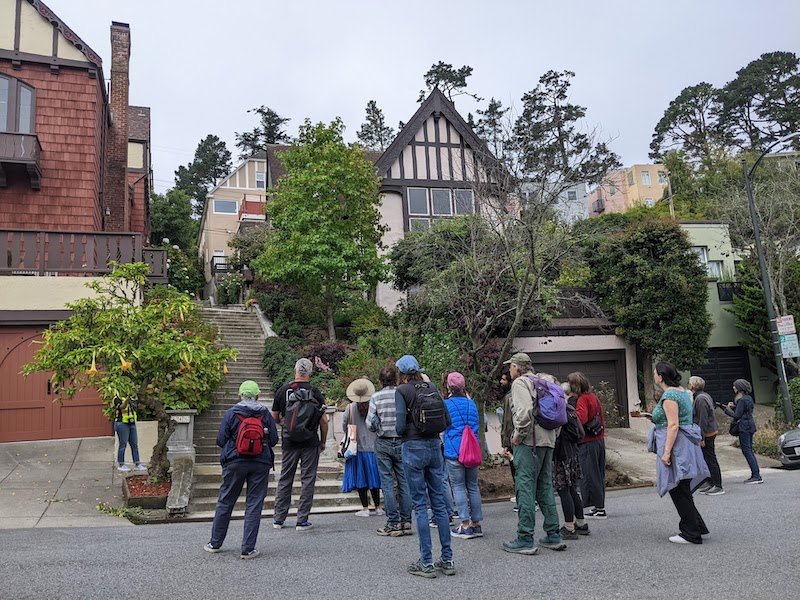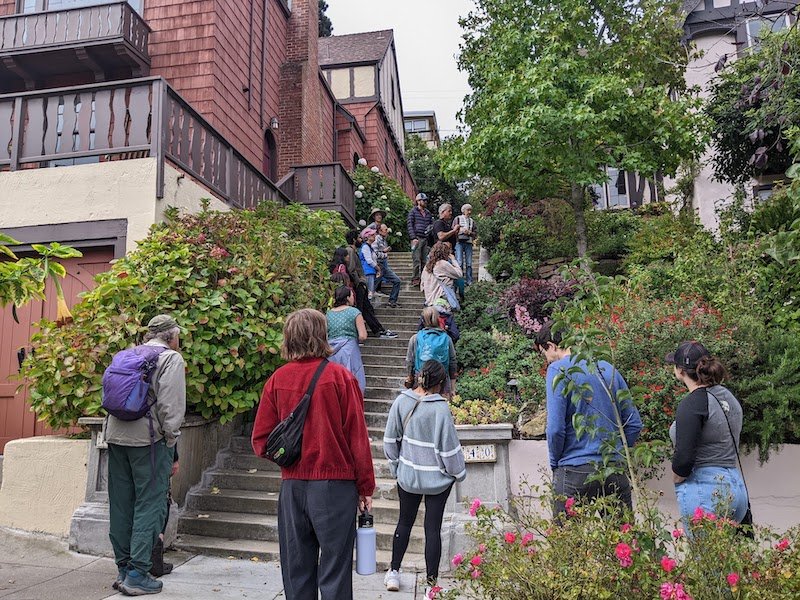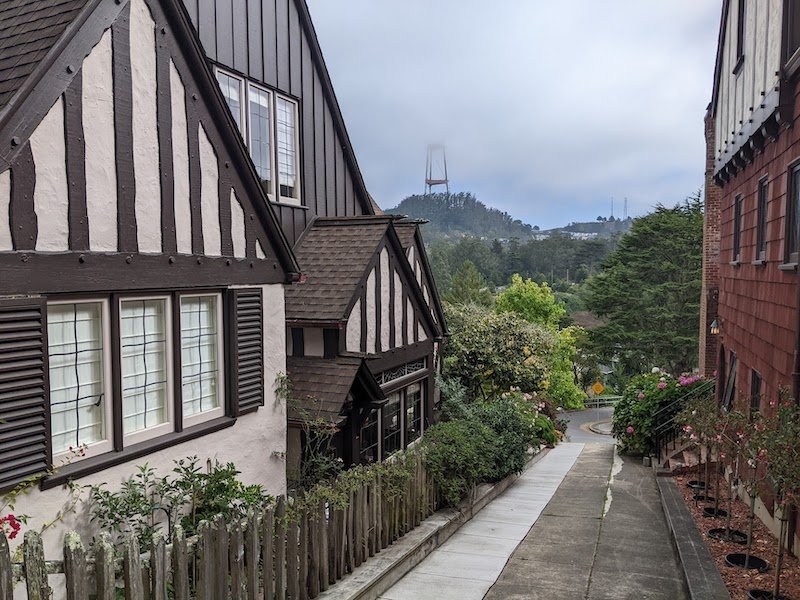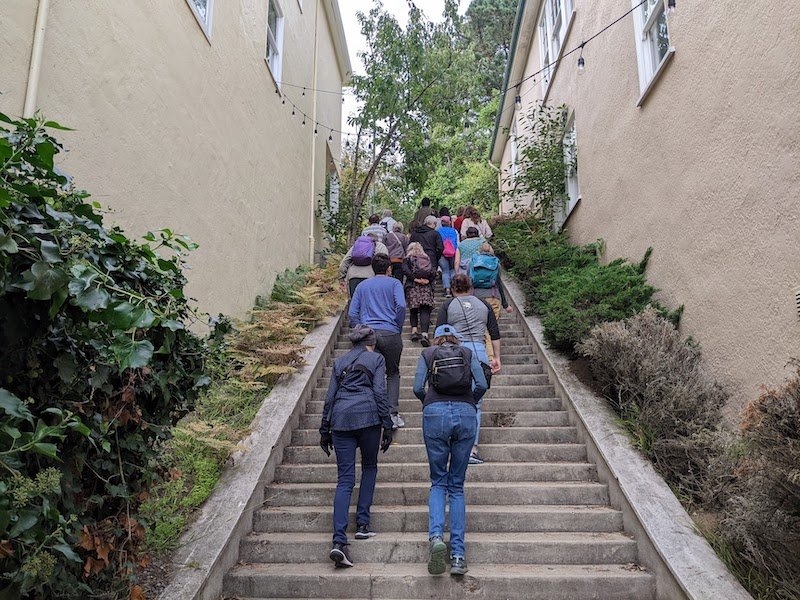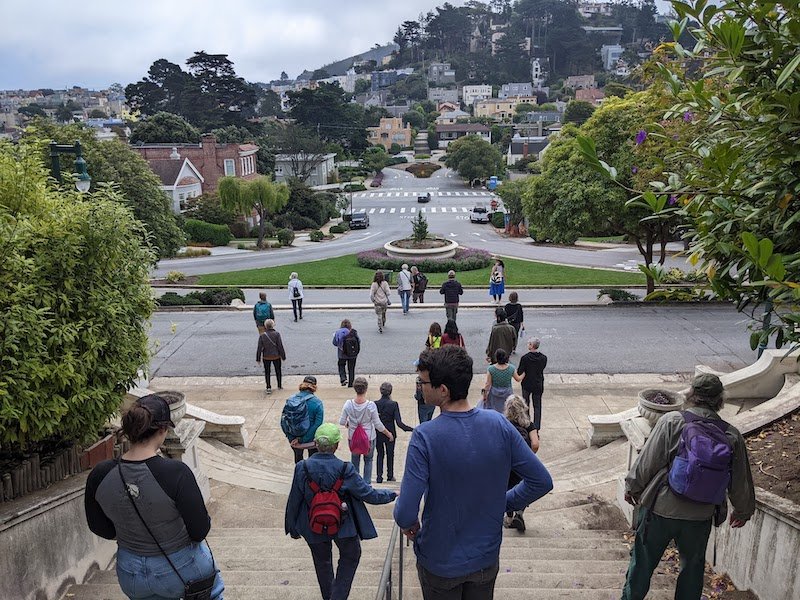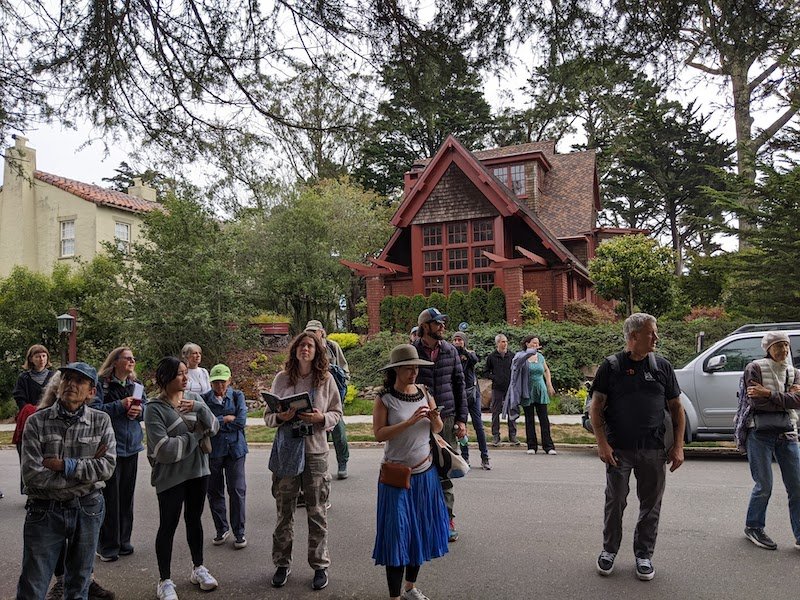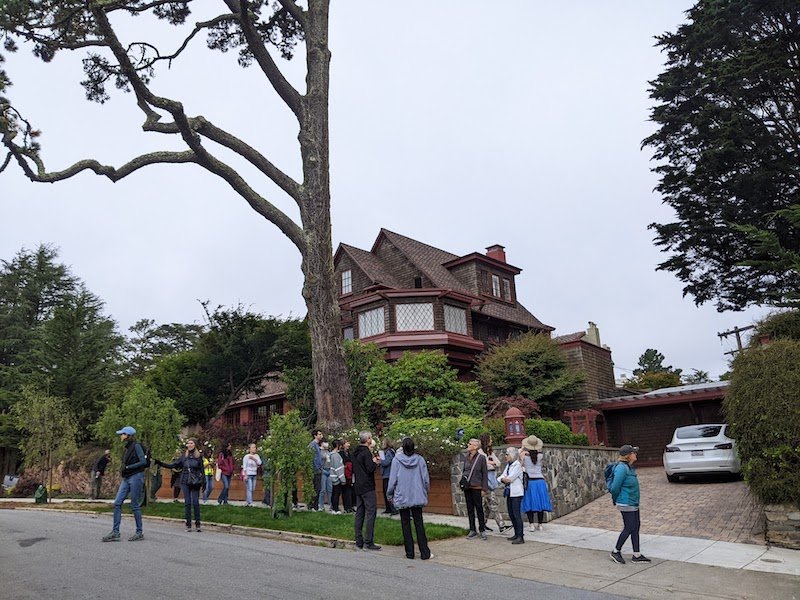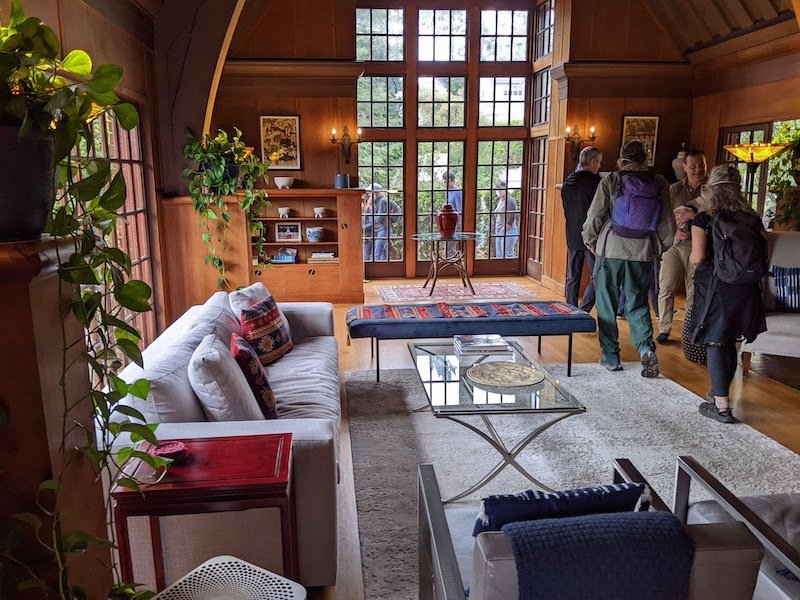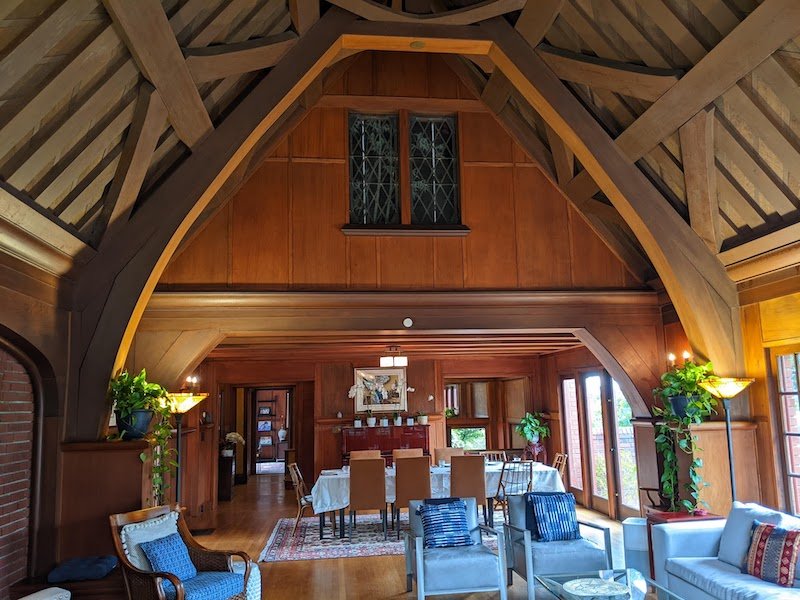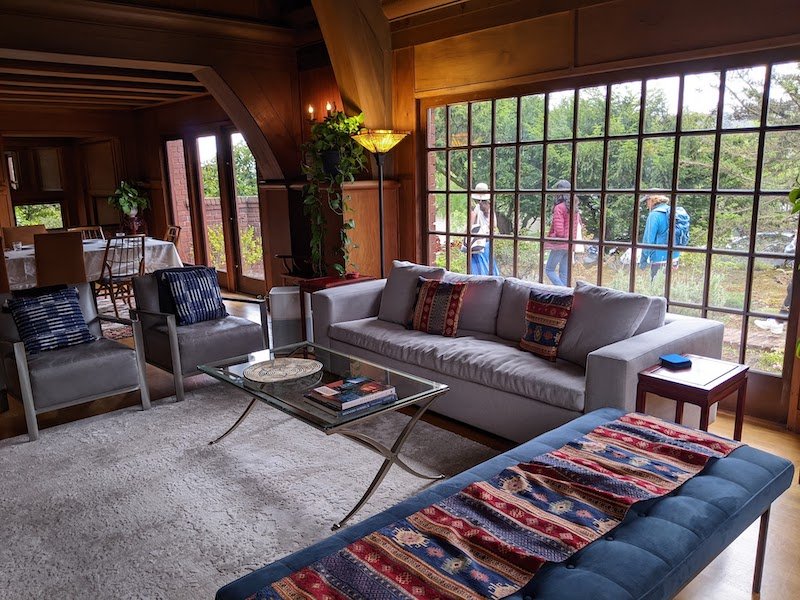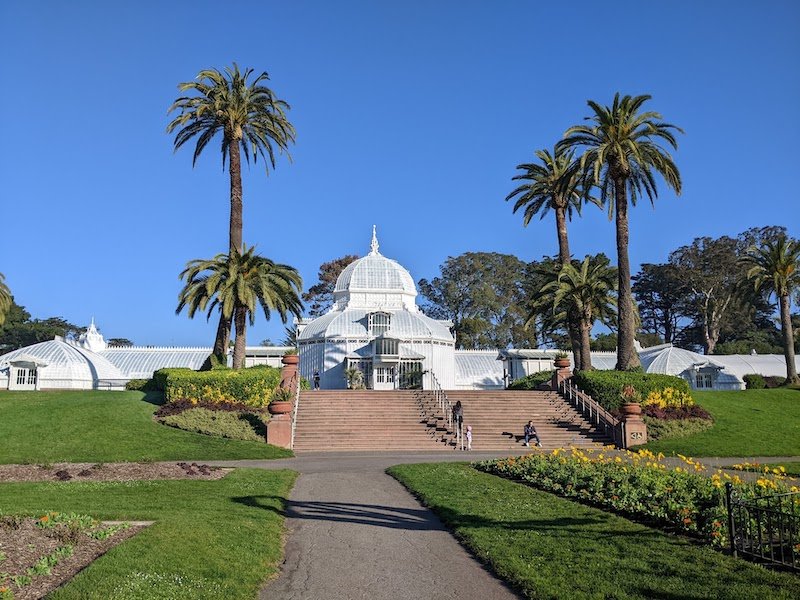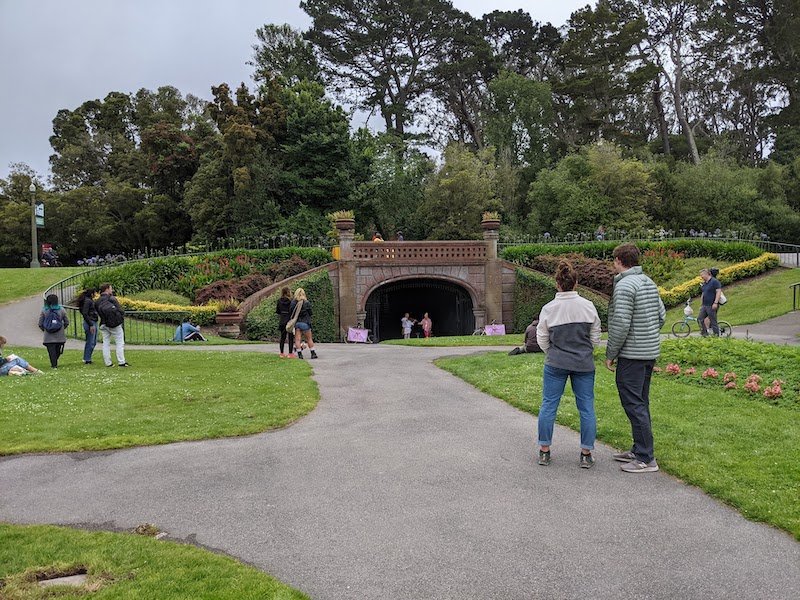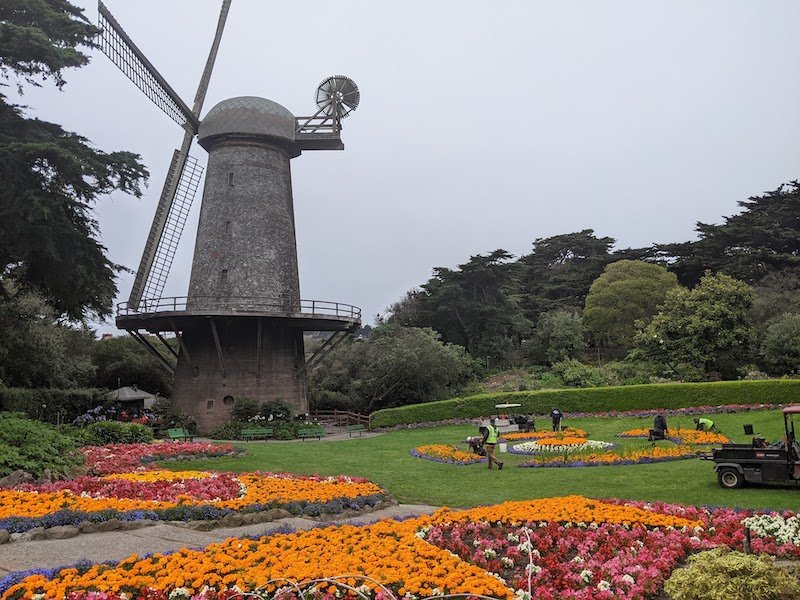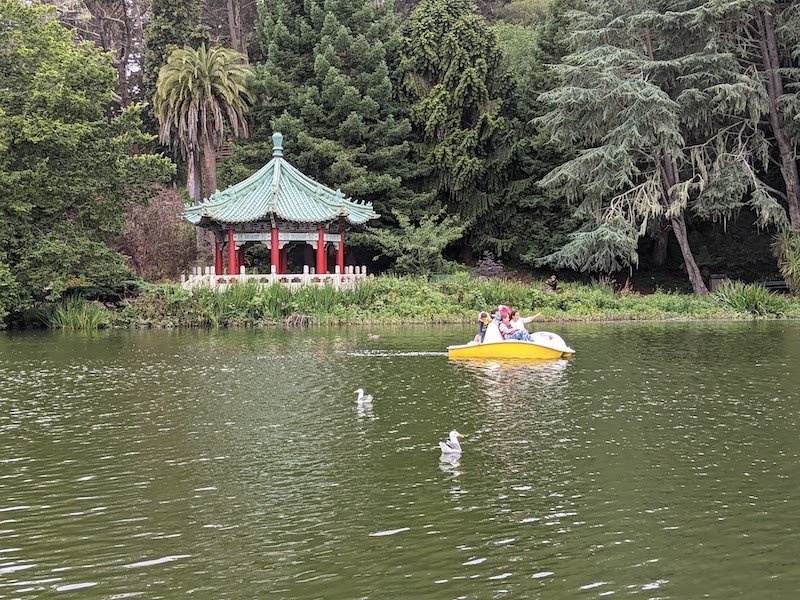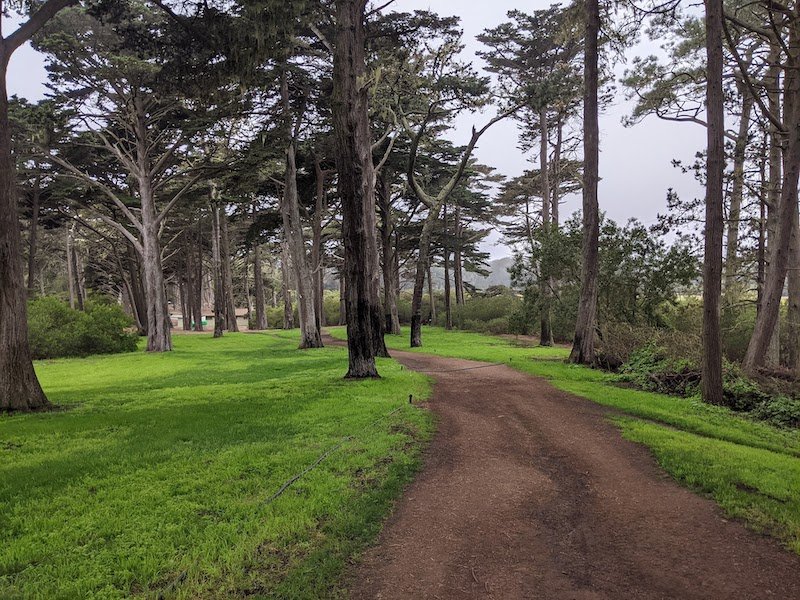Friends of the Urban Forest
Cities are better when there’s a generous tree canopy. Vegetation keeps the city cooler in summer, trees help clean the air, absorb noise, and beautify the landscape. Properties on tree lined streets are often more desirable and statistically more valuable than those in barren neighborhoods. But trees that grow in the city are different from those that grow in nature. They need to be selected for specific characteristics and require ongoing care from people.
Here in San Francisco city agencies realized that official crews were good at some aspects of cultivating tree cover, but bad at others. Cutting holes in the sidewalk, planting new trees, and trimming mature trees were all pretty straightforward for government bureaucracies. But providing ongoing care for young trees and keeping them alive long enough to mature was a real challenge.
San Francisco has a Mediterranean climate. In a good year we get three or four months of rain in winter followed by eight or nine dry months. In a drought we might not get any rain at all for four or five years in a row. So young trees need to be hand watered for a while until they set deep enough roots to find their own ground water. They must also be protected from vandals and occasionally replaced after random mishaps.
That’s why Friends of the Urban Forest was created in 1981. FUF is a non-profit organization that works with private property owners and city agencies to install and maintain street trees and sidewalk gardens. The city does what it’s good at while residents tend specific trees and gardens where they live and work. I first planted trees with FUF in the 1990s when I was living in a rental space. The owner of the property needed to sign off on the project, but I did the work. I’ve continue to be engaged with the organization on and off ever since and some of the trees I planted are now decades old.
I’m often surprised by how much a single plant can transform an otherwise banal little sliver between buildings. FUF helps resolve various conflicting uses of public and semi-public space. The sidewalks must be free of obstructions that would impede pedestrians, wheelchairs, baby carriages, driveways, emergency access, and underground utilities. The correct kinds of trees and plants must be selected so as to avoid aggressive roots breaking up the concrete or foundations. The esthetic preferences of each property owner must be balanced with pragmatic considerations.
The ancient technique of espaliering trees up against a flat wall is used to great effect in this instance - complete with an abundance of figs. A determined gardener will always find a way to cultivate something even where others see no potential. It’s this impulse on the personal level that needs to be bridged with municipal scale processes, attendant regulations and infrastructure.
FUF also serves as a de facto force for community organizing. There’s an economy of scale associated with cutting multiple holes into nearby sidewalks and planting dozens of trees in the same general location all at the same time. FUF requires neighbors to work together in a coordinated fashion in order to enjoy the benefits of these municipal investments. In turn, neighbors are more likely to encourage each other to tend to their new trees and gardens and build stronger social bonds.
I’ve noticed how street trees and sidewalk gardens are an indication of how well a neighborhood holds together. It’s obvious that wealthier neighborhoods have more assiduously tended landscapes. But there are pockets of greenery in areas I know are decidedly working class and dominated by renters rather than homeowners. And many solidly middle class neighborhoods are almost completely free of trees and seem to resist the effort to install them. It’s a mixed bag. It often comes down to a few motivated individuals one way or another.
Since my first encounter with FUF I’ve continued to engage with them on and off in various ways. This weekend friends and I took a walking tour with an arborist who described the long term trajectory of different trees after they were planted. Trees experience fads and fashions just like everything else and not every trendy tree is planted in the right spot or is properly cared for over the years.
One of the accidental side effects of a tour of the ever evolving urban forest is a concurrent examination of architecture and city planning techniques. This exclusive residential subdivision was constructed in the late 1800s and very early 1900s. As upscale and restrictive as it was in its day, it probably couldn’t be duplicated today given current code requirements and social imperatives. Just try getting a modern fire engine up a steep flight of steps or down a narrow roadway between these charming homes. The world that built this place is gone. In some ways that’s a good thing. In other ways it’s a bit sad.
One homeowner was gracious enough to offer the group a quick impromptu tour of his carefully restored property. Evidently he’s a friend of the arborist who lead the walk. This home was designed by Bernard Maybeck who was a big deal in his day. The home is traditional in some ways, but all those walls of glass were a premonition of the modernists who would arrive on the scene soon enough.
I’ll leave you with these photos of Golden Gate Park. Perhaps you’ve seen images like these before. Maybe you’ve visited some of these spots in person. William Hammond and John McLaren designed and managed the entire park beginning in 1871 in the style of Frederick Law Olmsted who designed Central Park in New York. But the park, all 1,017 acres of it, is entirely man made. Underneath the thick green forest and picturesque lakes are endless naturally occurring sand dunes. The native vegetation of San Francisco is mostly chaparral and scrub. The soil is too poor and the rainfall too sparse to support a forest without a little help from people. Cities are the largest things people build. Sometimes we build forests inside them too. It’s worth doing.
